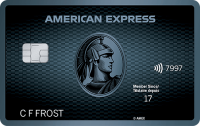AMEX CVV Code : What Is a CVV Number? – American Express
AMEX CVV Code : What Is a CVV Number? – American Express
Unlike other cards, Amex has a 4-digit CVV security code along with the CID (Card Identification Number).
Next time you buy something online or over the phone with your credit card, you may be asked for something called your credit card CVV. This stands for “card verification value.” Depending on your credit card provider, the code may also be referred to as your:
● CSC or card security code
● CID or card identification number
● CVC or CVC2, or card verification code
● CVV2, or card verification value code, 2nd generation
This three- or four-digit code tells the merchant that you are in possession of the card. The code also protects you from credit card fraud. Because you’re not in front of them during a transaction online or over-the-phone, the merchant can’t verify your identity with photo ID or by matching your signature to the one on the back of the card. Asking for your credit card CVV is helpful because a fraudster won’t have access to it if they stole your credit card number but don’t have the physical plastic. Your credit card CVV code is one way to help keep your credit card information safe online.
Where are CVVs located on a credit card?
Your credit card CVV code may not be in the same place on every credit card. If you have an American Express® Card, you will find the four-digit credit card CVV on the front.
Is it safe to give out your credit card CVV code?
You may be asked to give out your CVV if you’re making a purchase online or over the phone. It should be safe if you know the merchant and you’re not in a public place where you could be overheard on the phone.
When you’re shopping online, look for secure websites that start with https://. The “s” at the end stands for “secure.” This means your information will be encrypted and safe from cyberthieves.
Tips for how to keep your credit card information safe
Keeping your credit card CVV safe and out of sight is a great start, but you can do more to keep your credit card information safe. Consider these tips to further protect yourself.
Don’t save your credit card information online
When you make a purchase online, don’t save your credit card information on the site. This means you will have to enter it again for your next purchase, but it’s a small price to pay for keeping your information safe.
Manage your online passwords
To protect yourself from cyberthieves and hackers, keep your account passwords in a secure place. Change them regularly and make them difficult to guess. You don’t have to rely on your memory every time; to help organize all your passwords, consider signing up for a password manager program.
Monitor your credit reports
Check your credit reports on a regular basis. Visit Equifax Canada or TransUnion Canada to request a copy of it. Look for signs of fraud or identity theft, like accounts in your name that you never opened.
Review your bank statements regularly
Monitor your bank statements for charges you don’t recognize. Registering for Account Alerts can help you stay updated on payments and spend being made on your Card. If you see a suspicious transaction, contact your credit card issuer to find out what it is. If you didn’t make that purchase, you can dispute it, freeze your account, and request a new card.
